Soccer Dribbling Drills
Soccer dribbling is a fundamental skill that empowers players to control the ball, navigate through defenders, and create scoring opportunities. To excel in dribbling, players need a combination of technique, agility, and quick decision-making. In this comprehensive guide, we'll delve into a range of soccer dribbling drills designed to enhance players' dribbling abilities and take their game to the next level. Whether you're a beginner or an advanced player, these drills will help you master the art of dribbling.
Why Are Soccer Dribbling Drills Essential?
Soccer dribbling drills play a pivotal role in player development. Dribbling is not only about moving the ball; it's about moving with the ball effectively. Dribbling drills help players refine their ball control, improve their ability to maneuver in tight spaces, and develop the confidence to take on opponents. Whether it's a quick change of direction or a burst of acceleration, mastering dribbling techniques through dedicated drills can significantly impact a player's performance on the field.
Benefits of Incorporating Dribbling Drills
The benefits of including dribbling drills in soccer practice are extensive:
-
Enhanced Ball Control: Dribbling drills fine-tune a player's ability to keep the ball close to their feet, minimizing the risk of turnovers.
-
Agility and Coordination: These drills improve a player's agility, balance, and coordination, crucial for maneuvering around defenders.
-
Confidence Building: Regular practice boosts a player's confidence in their dribbling skills, enabling them to take on opponents with assurance.
-
Creative Play: Dribbling drills encourage players to experiment with various moves and techniques, fostering creative and unpredictable play.
-
Effective Transitions: Proficient dribbling aids in seamless transitions between defense and attack, enabling players to advance up the field.
Why do we Dribble the ball and When?
There are lots of triggers on match days that can give a player the cue that dribbling is the right decision. If your players are good dribblers they will probably want to keep on going until they lose the ball. This must be coached out of them so they can recognise when they are being double marked or when they are running up a blind alley.
You also have to educate parents not to shout at the dribbling player because this puts them off and makes them make decisions that are not coming from their own visual cues. There is nothing more off putting than having a parent shout “Get rid of it!” at a player.
So what are we looking at for players to make the right decisions themselves and what level as coaches do we need to get our player to?
These are the things to work on as a coach to create the best dribblers:
- Technique of the player
- Decisions to go past a player on the right or left
- Composure on the ball
- Anticipation of an opponent’s movement
- Creativity to use the space dribbled into
End Product After a Dribble
Dribbling with the ball should lead to a through pass or a shot but it doesn't compute that a dribble that doesn't end in this is a bad thing. Going past players in 1v1 situations can be important to the team to get them through the thirds and up the pitch.
Beating players with dribbles creates space behind the opposition and that will give teams more of an attacking threat.
It can also take pressure off a team when they are under pressure and there is no simple pass out of defence. Much better to keep hold of the ball and move out with it than a big hoof up the pitch.
And a dribbling player is more likely to be fouled getting a free kick that will also relieve pressure. Fouls in the attacking third can lead to good opportunities to score a goal from either a free kick or better still a foul in the penalty area leading to a penalty.
Dribble like Messi
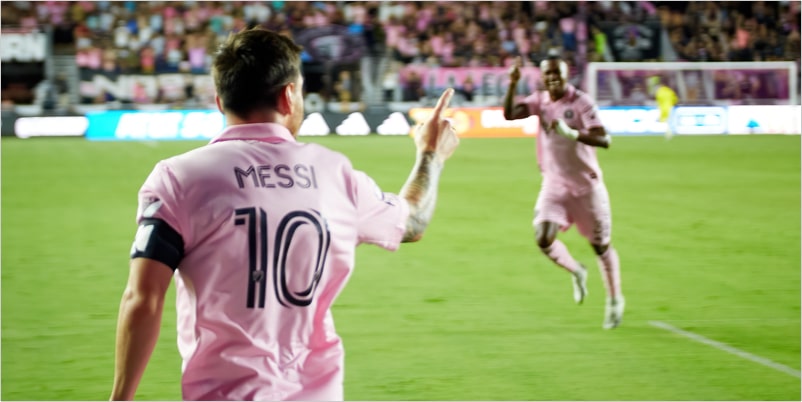
Messi is a fabulous dribbler, mainly because of his brain and his ability to read situations incredibly well. However you can coach the basic things he does but then the players must learn how to use those skills in game situations.
Messi's change of pace is one of the things that make him so difficult to defend against. You cannot relax for a second as a defender or he will suddenly accelerate past.
Messi's Technique Broken Down
- Use changes of pace – slowing the game down can catch out defenders when a dribbling player accelerates away with speed and skill.
- Use body feints to fool the defender into thinking the attacker is going one way but quickly changes feet to move the ball in the other direction. Look left, go right.
- Use both feet to control the ball. Take little touch with each foot and use your more developed foot to make the final move or the pass or shot at goal.
- IF the opportunity arises you can nutmeg or knock the ball past the defender and run around especially if the defender is square on to the dribble as they will have to turn and run which takes up vital seconds.
- Allow the defender to jump in then whisk the ball away and accelerate past.
All of these techniques take practice and when you look at what Messi does it isn't lots of step overs and other skills but feints and ball control with changes of pace. Simple!...
The end product of Making a Decision to Dribble
- Keep possession
- Beat defenders to get behind them
- Relieve the pressure when defending
What do Players Need?
- Ball control with both feet
- Be aware the defenders around them
- Be able to change direction
- Good weight of touch on the ball to keep it moving and not get it stuck under their feet


Improve Your GameJust 1.99 p/m
Exclusive drills and sessions, get involved today!
- 100’s of Drills
- Coach to Camera Videos
- Sessions from Pro’s
- Industry Leading Advice
Coaching Points
Keep your arms out at all times when dribbling around defenders. You can use them to brush past players, improve your balance, and keep players farther away from you.
Good balance will help you cut quickly in any direction while retaining control of the ball.
Land on the front of your feet every step, whether you are dribbling forward with your laces or cutting across your body using an inside touch.
- Use your body to protect the ball.
- Don't do too many moves, or attempt to beat the same defender multiple times.
How to Get Better at Dribbling
Dribbling is about more than just running fast
The first thing to understand about dribbling in soccer is that it isn’t just about how fast you can run with the ball. When you’re dribbling, you want to move at a speed where you can control the ball and have time to think about what you’re going to do next. You don’t want to be running so fast that you burn out after a few seconds and have no control over the ball anymore. Dribbling is also about using your whole body to control the ball – not just your legs. You need to use the correct muscles at the correct times to keep control of the ball, particularly when other people are trying to take it off you.
Learn to be light on your feet
One of the most important skills you can learn when it comes to dribbling in soccer is how to be light on your feet. This is something that all the best dribblers have in common. It’s partly a matter of technique: you want to move your feet quickly, keeping them close to the ground and only lifting them as high as necessary. It’s also a matter of mental approach. When you’re trying to dribble out of a tight situation, you need to be calm and relaxed so that you can make the right moves at the right time.
Practice making tight turns
Dribbling isn’t just about running with the ball – it’s about putting that ball in the back of the net. To do that, you need to get into scoring positions – and the best way to do that is to make tight turns so that you have time on the ball in the penalty area. The tighter your turns are, the easier it will be to get into scoring positions: you don’t want defenders to have time to nip in and nudge you out of the way. Dribbling on the training ground is a great way to get better at making tight turns. Find a quiet area where you can practice turning and using one touch football: touch the ball once before shooting at the goal.
Dribble with a low centre of gravity
If you’re trying to dribble past people and get into scoring positions, you want to be as low as possible. Defenders will expect you to be tall, so if you drop low and put your weight on your heels, you’ll create more space and surprise them. Being low also makes you harder to knock off the ball, and less likely to become tired quickly.
Pulling and Turning Moves
One of the most common ways to get past defenders is to use a pulling move followed by a turning move. This is when you use one foot to pull the ball away from the defender, and then quickly turn the other way to get past them. Although it might sound simple, this move is very effective, particularly when you’re being closed down by more than one defender. The key is to make the first move quick enough that the defender does not have time to react.
Change of Direction Moves
A change of direction move involves going one way with the ball, and then quickly changing direction to go the other way. While it might sound similar to a pulling and turning move, a change of direction move involves less ball contact and is therefore a little riskier.
Other Dribbling Moves
Dribbling can involve a lot more than just running with the ball – it can also involve shielding the ball, shielding being when you use your body to keep the ball away from defenders. You can also use one touch passing, both with teammates and while being closed down by defenders. With the latter, it’s great to practice hitting the ball first time and looking up to see where your team mates are. It’s also worth working on your feinting, which is when you make a fake movement to mislead defenders. Dribbling is one of the most iconic features of soccer, and one that any kid who picks up the game as soon as they see it on TV wants to get good at. If you want to improve your dribbling, you need to practice more and get better at the skills involved.
Optimizing Practice Sessions for Maximum Impact
To make the most of practice sessions:
-
Dedicated Sessions: Allocate specific practice sessions solely to dribbling drills for focused skill development.
-
Immediate Feedback: Provide instant feedback and correction to ensure proper technique.
-
Progressive Complexity: Gradually increase the complexity and intensity of drills as players improve.
8 Best Dribbling Soccer Drills
1. Creative Dribbling
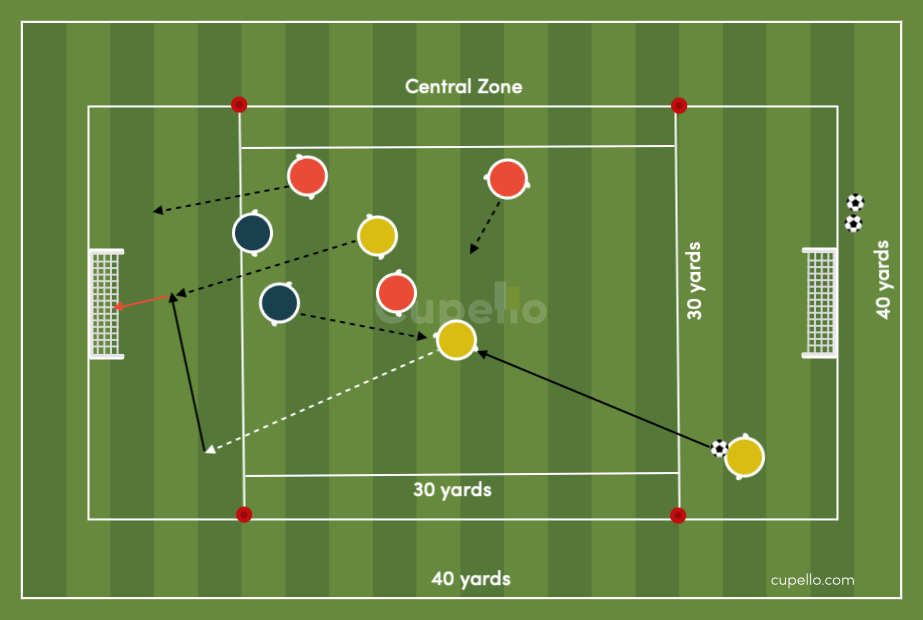
Going 1v1 in areas of the pitch where creative dribbling will create goalscoring chances is key to getting your attackers to make their attacks count. Dribble in dangerous areas of the pitch also wins free kicks and gets behind a static defence.
2. Individual Ball Skills
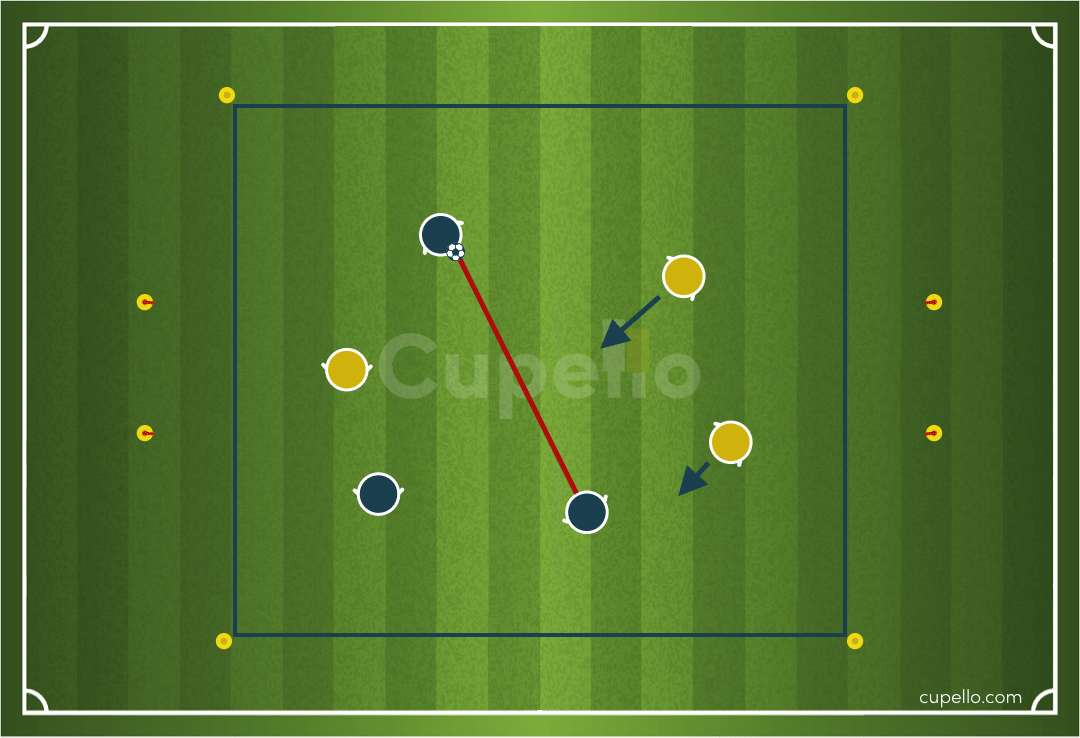
Dribble with fast feet from quick passes gives attackers the chance to get into dangerous areas of the pitch by dribbling past defenders and splitting them open to create lots of chances to score.
3. 2v2 Battle
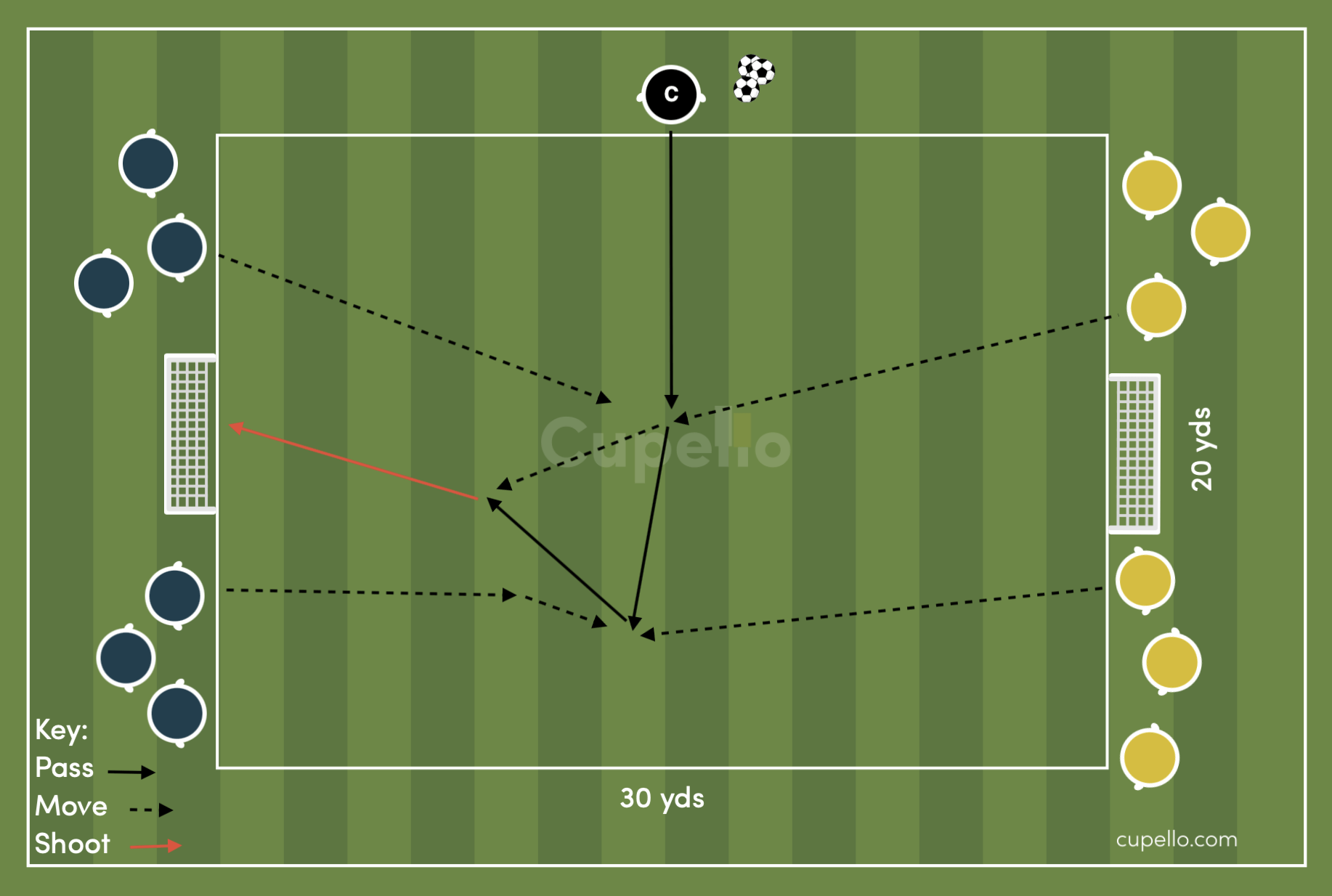
Put your player's skills to the test in this drill where players are working in twos that puts all their ball skills under pressure, especially their dribbling and gets them making the right decisions to dribble, pass or shoot.
4. The Great Escape
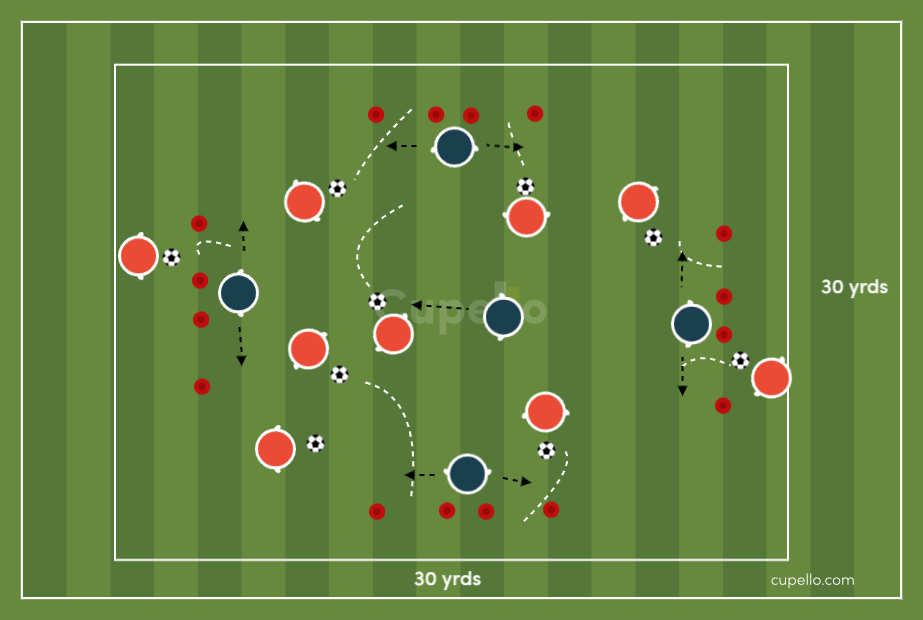
This is a fun game for the younger age groups to get players to develop their skills using different parts of the foot and master the ball through dribbling, passing and movement
5. Beat Opponents with a Dribble
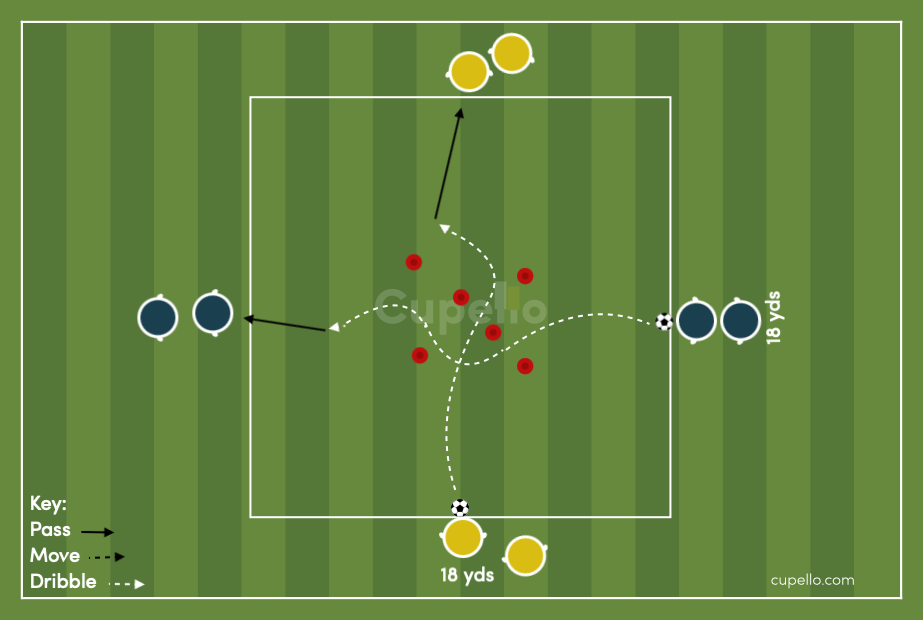
Use dribbling as part of your possession based game with players looking up to see where their teammates and opponents are on the pitch – dribble before passing or shooting
6. Dribbling Dynamo
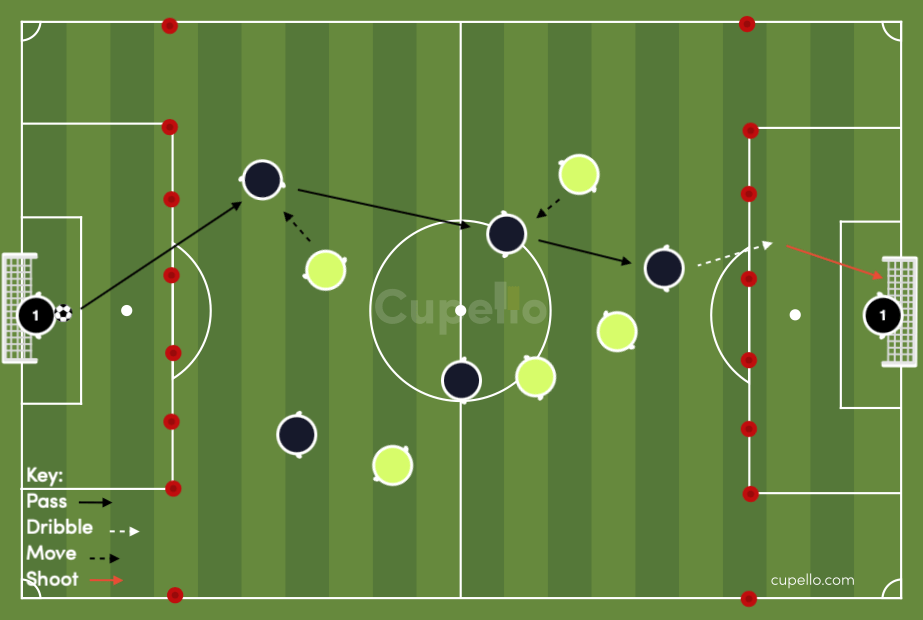
Stop your players from kicking the ball straight back to the opposition with this drill which helps them use dribbling skills to keep the ball and to make the right decisions when to pass it
7. Dribbling in a Crowd
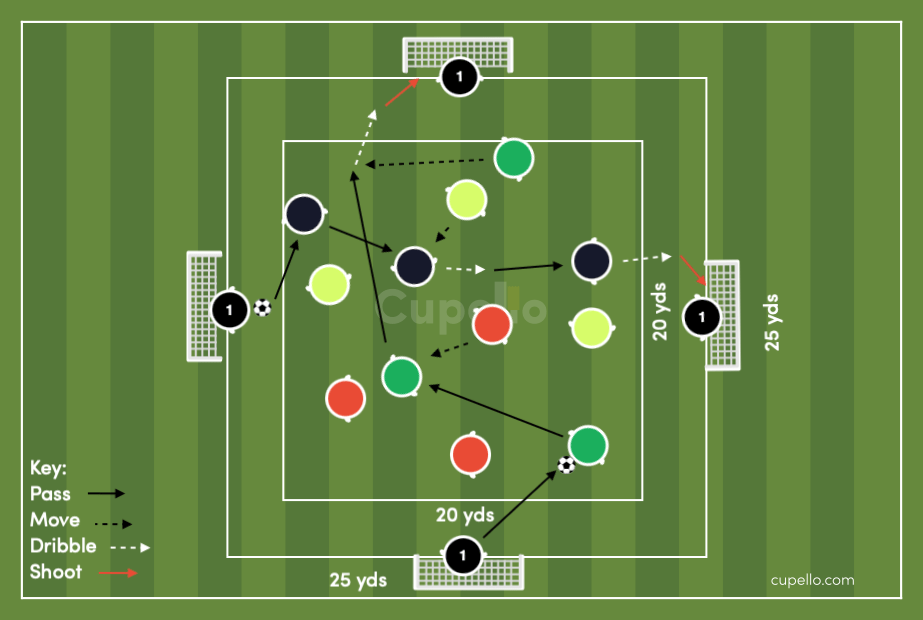
Get your players to dribble out of crowded areas keeping possession of the ball and moving into advanced attacking positions behind the defenders who have blocked passing routes but cannot stop a clever dribble
8. 1v1 to Goal
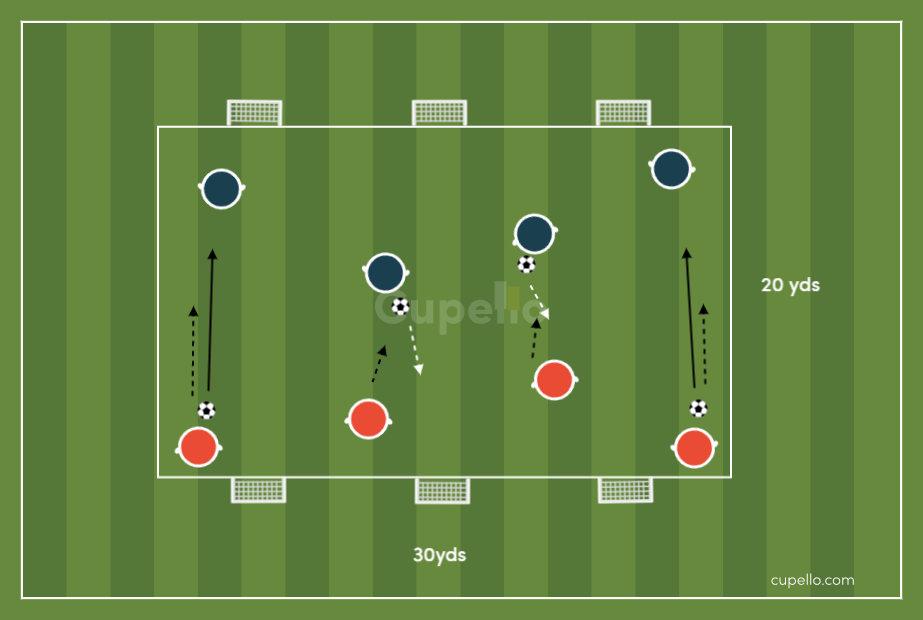
Dribbling is a key skill in 1v1 situations – players need to be able to dribble past opponents and pass the ball into dangerous areas of the pitch. Practising 1v1 skills is vital to player development.
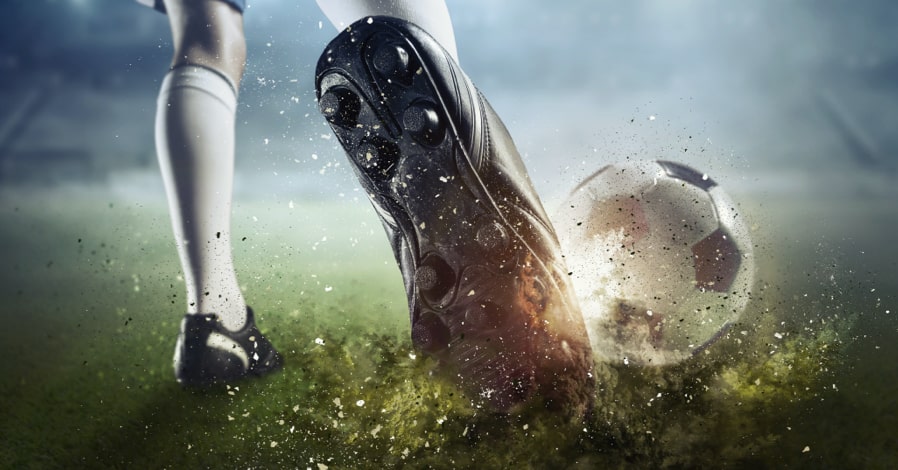
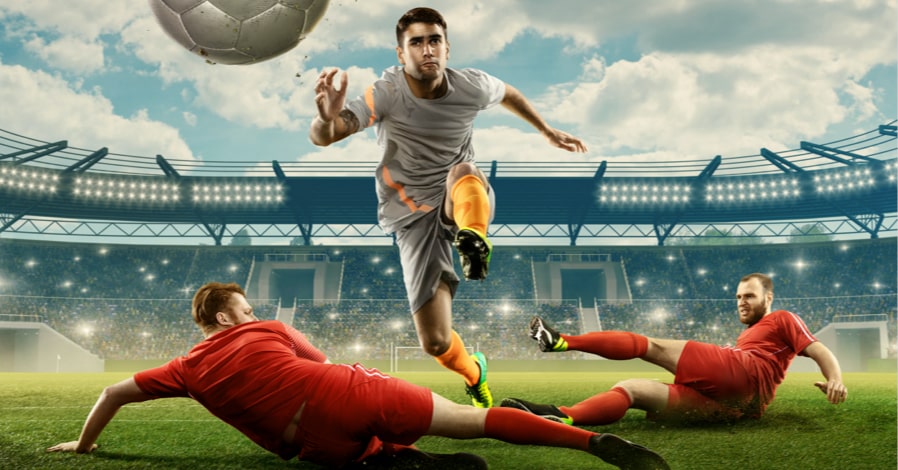
Cupello
Rethinking soccer coaching via our industry leading tools. Built to offer effective coaching development solutions for players and coaches of all levels.